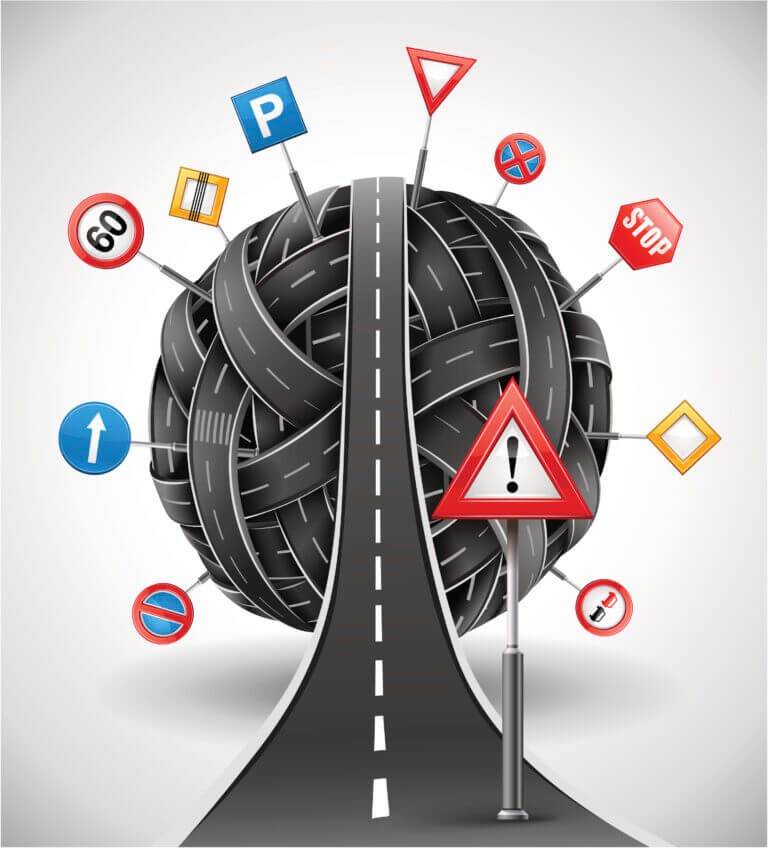In today’s hyper-connected world, the ability to track anything and everything has become an indispensable tool. From monitoring the performance of our smartphones to pinpointing the location of misplaced luggage, tracking devices and systems have woven themselves seamlessly into the fabric of daily life. But navigating the intricate world of tracking technology can be a daunting task, leaving many of us feeling lost in a labyrinth of jargon and bewilderment. Fear not, intrepid explorer! This comprehensive guide is your trusty map, ready to unravel the mysteries of tracking devices, systems, and services, equip you with the knowledge to choose the right solution for your needs, and empower you to navigate the exciting possibilities this technology unlocks.
The Glitch in the Machine: When GPS Goes Ghost – Unraveling the Mysteries of Tracking Technology
The map on your phone reads like a familiar lullaby. The blue dot, a faithful representation of you, glides smoothly along the designated path. But wait, what’s that? A sudden jolt, a disconcerting leap, and your dot has morphed into a renegade, teleporting you to the middle of a field you haven’t even heard of. Welcome to the uncanny world of GPS glitches, where the dependable becomes the disconcerting, and your trusty tracker transforms into a mischievous ghost in the machine.
This unsettling phenomenon, while often dismissed as a mere technical hiccup, unveils a fascinating tapestry of factors that can turn our digital guide into a phantom navigator. Buckle up, intrepid explorers, as we delve into the nine layers of the GPS glitch, unearthing the secrets of this technological anomaly and equipping you with the knowledge to tame the ghost in your machine.
The Celestial Symphony – The Orchestra of GPS
GPS, the acronym for Global Positioning System, is a symphony of celestial instruments. A constellation of satellites orbits the Earth, each broadcasting a unique signal. Your GPS tracker, the conductor in this cosmic orchestra, listens intently, decoding the signals and calculating its position based on their precise timing and angles. This intricate dance of satellites and receivers is the foundation of our digital navigation, but even the most harmonious symphony can experience discordant notes.
The Atmospheric Interlopers – When Weather Plays Havoc
Imagine a thick fog rolling in, obscuring the conductor’s view of the orchestra. Similarly, certain weather conditions can disrupt the delicate interplay between satellites and receivers. Heavy clouds, charged with moisture, can absorb or scatter GPS signals, leading to position errors or complete signal loss. Rain, snow, and even dense foliage can act as unwelcome soloists, drowning out the satellite melodies and leaving your GPS conductor bewildered.
The Terrain’s Tyranny – Mountains and Metal Monsters
GPS signals, like whispers on the wind, can be easily disrupted by physical obstacles. Towering mountains can act as signal-blocking barriers, casting long shadows of error over your digital map. Buildings, particularly those constructed with metal, can reflect and distort signals, turning your GPS into a confused cartographer. Even the canyon carved by your car’s windshield can become a mischievous barrier, momentarily interrupting the satellite symphony.
The Satellite Shuffle – When Orbits Get Wonky
Even the celestial performers in this GPS play aren’t immune to the occasional misstep. Satellite orbits, though meticulously planned, can be affected by various factors, including gravitational perturbations and solar activity. These orbital wobbles, though slight, can translate into inaccuracies in your GPS position, turning your blue dot into a jittery phantom on the digital map.
The Software Symphony – When Algorithms Go Awry
The complex algorithms within your GPS device act as the musical score that guides the conductor’s interpretations of the satellite signals. But just like a faulty note can throw off an orchestra, software bugs or outdated firmware can introduce errors into your GPS calculations. These digital glitches can manifest as sudden jumps in location, unexpected detours, or even complete GPS paralysis, leaving you stranded in a cartographical wasteland.
The Multipath Mayhem – Echoes in the Digital Canyon
Imagine the conductor being bombarded with conflicting instructions from multiple musicians playing the same melody. This is the essence of multipath interference, a phenomenon where GPS signals bounce off buildings, mountains, or even other objects before reaching your receiver. These echoes confuse the conductor, leading to inaccurate position readings and turning your GPS into a duplicitous storyteller, spinning tales of locations you never visited.
The Intentional Interlopers – When Jamming Disrupts the Harmony
In a world where digital security is paramount, intentional GPS jamming can become a malicious melody in the symphony. Powerful transmitters can deliberately block or distort satellite signals, creating a digital fog that confuses GPS devices and throws their navigation off course. This deliberate disruption, often employed for nefarious purposes, can turn your GPS into a silent instrument, unable to play its part in the navigational orchestra.
The Ghost in the Machine – Hardware Hauntings
GPS devices themselves, like any physical instrument, are susceptible to malfunctions. Faulty antennas, damaged circuitry, or even dying batteries can introduce errors into the calculations, turning your GPS into a phantom navigator, haunted by its own internal demons. These hardware ghosts can manifest as erratic movements, signal dropouts, or complete device failure, leaving you adrift in the digital sea without a reliable compass.
Unveiling the Tracker Tribe – A Taxonomy of Tracking Devices
Before embarking on our journey, let’s establish a common language. Tracking devices come in a dazzling array of shapes, sizes, and functionalities, each catering to a specific need. Consider this a primer to the diverse tracker tribe:
GPS Trackers: These ubiquitous devices leverage the Global Positioning System to pinpoint the location of an object in real-time. Picture stolen vehicles recovered, precious pets reunited, and adventurers traversing uncharted territories – all thanks to the magic of GPS.
Cellular Trackers: Utilizing cellular networks, these trackers provide location data even in remote areas where GPS signals are weak. Imagine valuable assets like shipping containers traversing continents or construction equipment navigating remote job sites, all within the watchful eye of cellular tracking.
RFID Trackers: Radio-frequency identification (RFID) trackers employ radio waves to identify and track objects within a short range. Think inventory management in warehouses, access control in buildings, and even contactless payments in retail stores, all orchestrated by the efficient hand of RFID.
Bluetooth Trackers: These short-range trackers leverage Bluetooth technology to locate lost items within a limited radius. Imagine misplaced keys magically reappearing under the couch or a frantic phone hunt ending with a triumphant ringtone emanating from beneath the car seat – all thanks to the convenience of Bluetooth tracking.
Passive Trackers: Unlike their active counterparts, passive trackers don’t emit signals but reflect incoming waves. Think wildlife monitoring tags attached to endangered species or covert operations requiring discreet tracking, where stealth is paramount.
This is just a glimpse into the diverse tracker family. Each sub-type boasts unique strengths and weaknesses, making them ideal for specific applications. Understanding this classification system is the first step to unraveling the mystery of choosing the right tracker for your needs.
Charting the Course – The Power of GPS Tracking
Among the tracker clan, GPS reigns supreme in terms of popularity and versatility. But how does this magical technology actually work? Imagine a constellation of satellites orbiting Earth, constantly broadcasting signals. GPS receivers on the ground (embedded in your phone, car, or dedicated tracker) decode these signals, calculating their distance from multiple satellites to triangulate their precise location. This data is then translated into the familiar maps and directions we rely on daily.
GPS tracking technology unlocks a treasure trove of possibilities:
Fleet Management: Businesses can monitor the location and performance of their vehicles in real-time, optimizing routes, improving fuel efficiency, and ensuring driver safety.
Personal Safety: Lone adventurers can share their location with loved ones for peace of mind, while emergency services can locate individuals in distress with remarkable accuracy. Imagine a solo hiker triggering an SOS alert on their GPS tracker, sending their coordinates to emergency responders who can quickly locate and assist them.
Asset Tracking: Valuable equipment, from construction machinery to shipping containers, can be monitored to prevent theft and optimize deployment. Picture expensive construction equipment equipped with GPS trackers, deterring would-be thieves and ensuring the optimal deployment of resources.
Animal Tracking: Researchers can study the migration patterns of wildlife, shedding light on their behavior and conservation needs. Imagine scientists monitoring the movements of endangered penguins with GPS trackers, gaining valuable insights into their habitat and migratory patterns.
The applications of GPS tracking are as boundless as human imagination. From revolutionizing logistics to safeguarding endangered species, this technology continues to reshape the way we navigate and interact
Tracking the Rainbow Nation: How GPS Works in South Africa
From the bustling streets of Johannesburg to the sprawling savannahs of Kruger National Park, South Africa’s diverse landscape presents unique challenges for GPS tracking. But fear not, fellow explorers! Understanding how GPS navigates this vibrant nation requires delving into two key aspects: infrastructure and satellite coverage.
1. Building the Grid: South Africa’s GPS Infrastructure
The foundation of reliable GPS tracking lies in a network of ground reference stations, strategically placed across the country. These stations receive and relay signals from the GPS satellites, providing accurate location data that feeds into tracking systems. Luckily, South Africa boasts a robust network of these stations, ensuring consistent coverage throughout major urban areas and even extending into rural regions.
2. Reaching for the Stars: Satellite Coverage in South Africa
But the ground stations are only half the story. The heart of GPS lies in a constellation of orbiting satellites circling the Earth, constantly transmitting signals. South Africa benefits from two main satellite systems: the American GPS system and the European Galileo system. This dual coverage ensures that even in remote areas where one system’s signal might be weaker, the other can pick up the slack, providing consistent location data.
However, it’s not all sunshine and rainbows. Factors like mountainous terrain and dense vegetation can sometimes weaken or block satellite signals, particularly in deep valleys or thick forests. Additionally, South Africa’s location at the southern tip of Africa puts it slightly further away from the GPS satellite constellation compared to countries closer to the equator, potentially impacting signal strength in certain areas.
Navigating the Challenges: Solutions for Accurate Tracking in South Africa
Thankfully, technological advancements are constantly improving GPS accuracy in South Africa. Techniques like Assisted GPS (A-GPS) and Differential GPS (DGPS) utilize additional data sources like cellular networks or reference stations to supplement satellite signals, significantly enhancing location accuracy even in challenging environments.
So, whether you’re tracking your precious cargo across the Karoo or navigating the vibrant streets of Cape Town, understanding how GPS works in South Africa empowers you to choose the right tracking solution and confidently explore this magnificent nation. Remember, with a bit of technical savvy and the right tools, you can unlock the full potential of GPS tracking and truly chart your own course in the Rainbow Nation.



